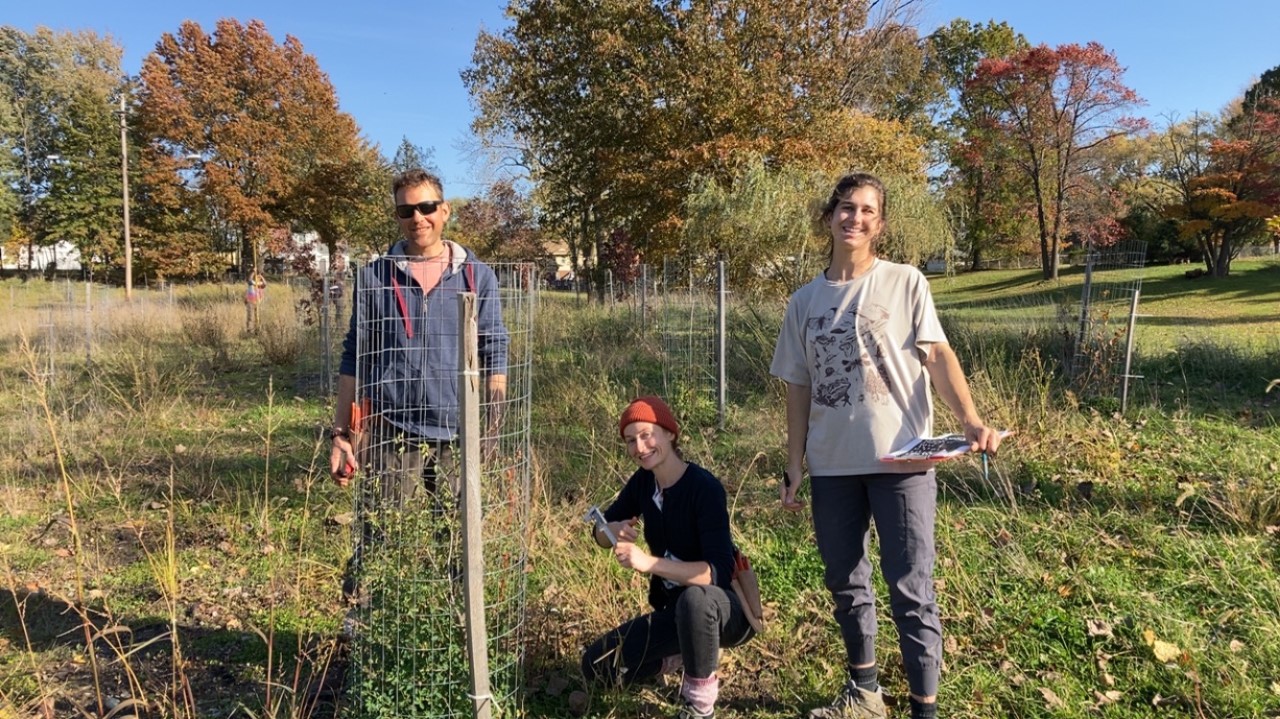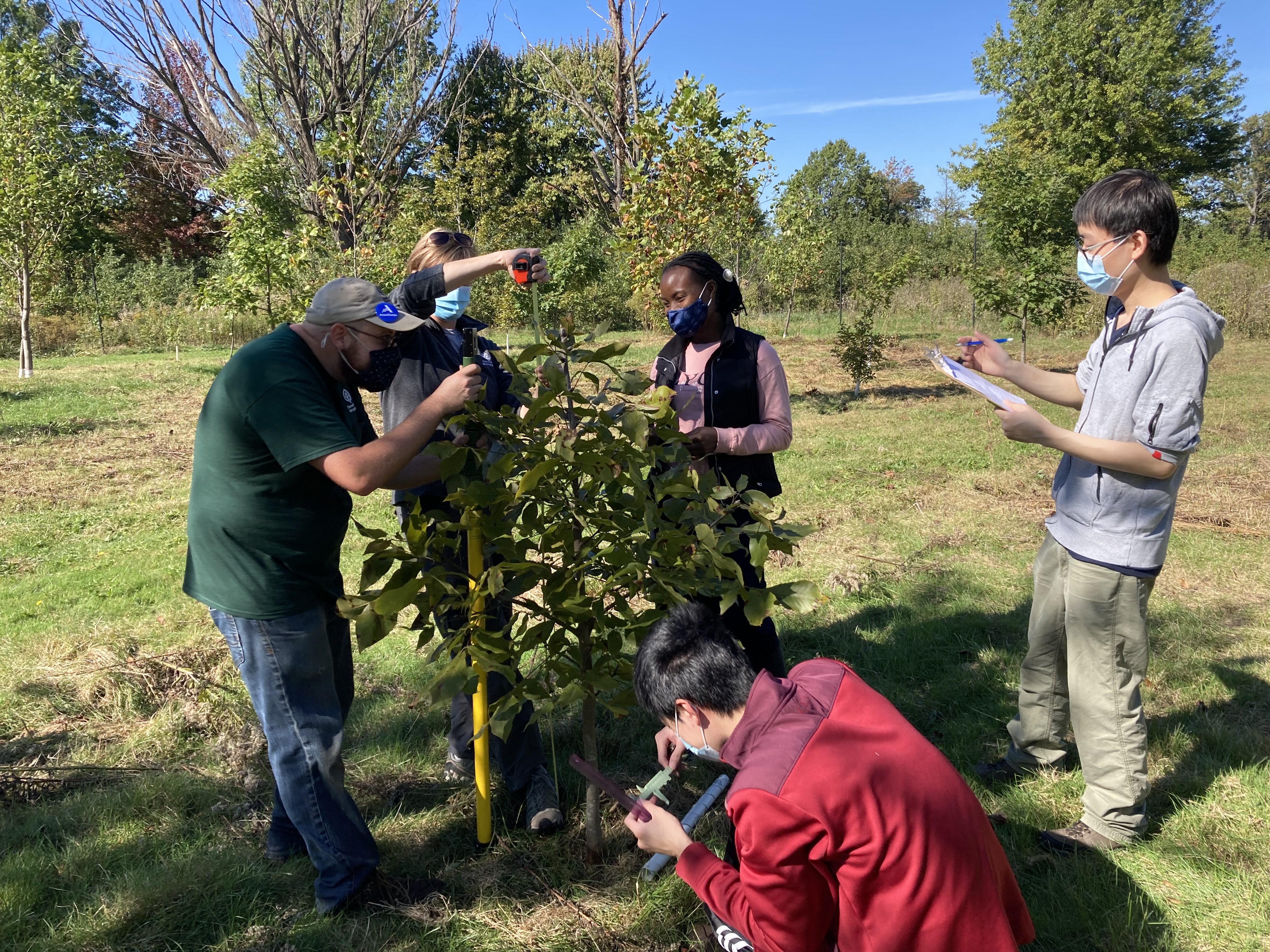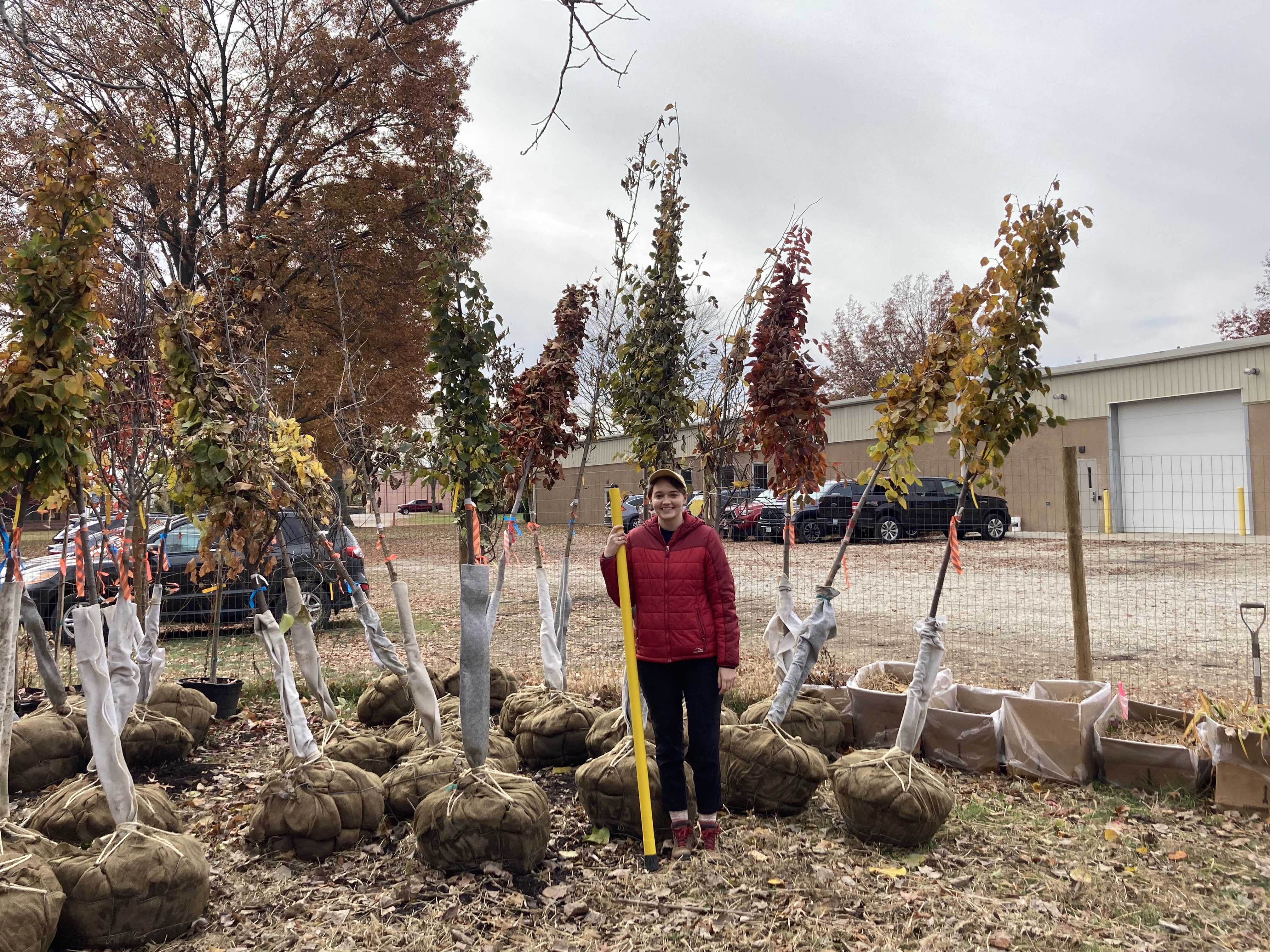
Out Of Sight, Top Of Mind
By Claudia Bashian-Victoroff - Guest Author
Wednesday, Feb. 8, 2023
Forests in the Northeast are complex systems and finite resources. Given the recent passage of New York’s final Climate Plan, the State seeks to leverage and grow these existing forest ecosystems in the climate crisis and draw heavily on these limited resources. In this four-part blog series, the Adirondack Council is pleased to present guest writers Joan Maloof, Claudia Bashian-Victoroff, Bob Leverett and Bill Moomaw to present on topics such as below-ground fungal networks, aboveground ecology, habitat connectivity and how the intrinsic value of forests must be elevated. - Adirondack Council
Before I get into the technical stuff, I’m going to introduce myself. My name is Claudia Bashian-Victoroff. I am a mycologist focused on mycorrhizal ecology. I became transfixed with mycorrhizal fungi early in my undergraduate career. I did not plan to become a scientist until the first time I heard the term “mycorrhizal fungi” in Dr. Bala Chaudhary’s soil ecology class at Loyola University Chicago. I immediately found the biology of mycorrhizal fungi to be quite exciting.
These organisms exist largely belowground forming networks between trees and plants in the forest and aiding in nutrient exchange, which is pretty cool. I was attracted to mycorrhizal ecology as a field because so many questions remain about these elusive fungi. After my undergraduate, I received my master’s from SUNY ESF in 2020 working with Dr. Tom Horton. My master’s research focused on the impact of nitrogen and phosphorus fertilizers on mycorrhizal fungi. Now, I am living in Cleveland, Ohio and working as a researcher in the Burke Lab at the Holden Arboretum where our laboratory group studies forest soil ecology.
Mycorrhizal fungi are a group of plant soil symbionts, which are ubiquitous in terrestrial ecosystems. The word ‘mycorrhiza’ is a combination of the Greek roots “myco”, meaning fungus, and “rhiza”, meaning root (Frank, as cited in Trappe 2005). Between 80 and 90 percent of land plants form associations with mycorrhizal fungi, making mycorrhizae Earth’s most prevalent symbiotic relationships in terrestrial systems (Smith and Read 2008). Mycorrhizae refers to the exchange of resources at the interface of fungal hyphae and plant roots. The basic exchange of resources in mycorrhizal symbioses involves the absorption and supply of soil nutrients (mainly nitrogen and phosphorus) by the fungus to the plant in exchange for a share of the plant’s photosynthetically derived sugars (Smith and Read 2008). Beyond this exchange of resources, mycorrhizal fungi may aid in plant drought tolerance, and improve plant defense against soil pathogens.
It has become increasingly clear to researchers that mycorrhizal fungi can benefit ecological restoration efforts. While most restoration projects focus their efforts aboveground, restoring soil microbial communities in degraded ecosystems may improve restoration outcomes. When human impacts such as farming, land development, and forestry change plant communities, soil fungal communities change as well. As obligate symbionts, mycorrhizal fungi cannot persist if their host plants are removed from a landscape. Therefore, when restoration practitioners add plants into a degraded landscape, those plants may not have the same access to mycorrhizal fungi as they would in a pristine ecosystem. While numerous studies have indicated that restoring the soil microbiome (including mycorrhizal fungi) improves plant growth (Neuenkamp et al. 2018) and influences plant community composition (Wubs et al. 2016), few restoration efforts apply these findings.

Our laboratory group is investigating mechanisms to integrate mycorrhizal fungi into plant restoration projects. In 2019, members of our lab published a paper comparing the effect of commercial and whole soil inoculum on nitrogen and phosphorus dynamics, soil microbial community structure, and tree growth in Liriodendron tulipifera and Prunus serotina saplings (Lance et al. 2019). The process of whole soil inoculation is when a small amount - about a handful - of soil from an intact ecosystem is added to an ecosystem with degraded soils. In this project, trees were being planted at a former golf course where landscaping, consistent mowing, and tree removal had degraded the soil. By adding soil inoculum at the time of planting trees for restoration, we can reintroduce soil microbes including mycorrhizal fungi, hopefully to the benefit of tree health. In this study, whole soil inoculum was found to be more effective than commercial inoculum in increasing plant growth and nutrition.

To build off of our previous work, we have begun a large-scale experiment adding whole soil inoculum to urban plantings throughout the greater Cleveland area. In this experiment we hope to improve outcomes for urban trees, and to determine if whole soil inoculation is viable in large scale urban canopy restoration projects. Throughout the fall and winter of 2021 and 2022, our lab was involved in community plantings for different nonprofit organizations and municipalities across the Cleveland area. In total, these efforts accounted for nearly 450 trees being planted in the community.
We added whole soil inoculum to half of the trees and left the other half as control trees without added inoculum. We measured the diameter and height of the trees upon planting and mapped the locations of the trees after planting. This effort has created a robust dataset to track the possible effect of adding whole soil inoculum from local natural areas (containing propagules from symbiotic soil organisms including mycorrhizal fungi) on the growth and survival of urban trees in degraded soils. We will continue to monitor the growth and survival of these trees for years to come. Through this work we hope to elucidate effective and sustainable restoration procedures for tree plantings in urbanized or otherwise degraded ecosystems.

Like other groups of life, fungi are threatened by habitat loss, pollution, and climate change. An additional pressure that symbiotic fungi face is the loss of symbiotic hosts. Soil inoculation projects, like those above, may be effective ways to reintroduce mycorrhizal fungi to habitats where they once lived, potentially improving tree health and fungal conservation at the same time!
If you have any question about this project please feel free to contact me at cvictoroff@holdenfg.org.
Resources:
Lance, A.C., Burke, D.J., Hausman, C.E. and Burns, J.H. (2019), Microbial inoculation influences arbuscular mycorrhizal fungi community structure and nutrient dynamics in temperate tree restoration. Restor Ecol, 27: 1084-1093. https://doi.org/10.1111/rec.12962
Neuenkamp, L., Prober, S. M., Price, J. N., Zobel, M., & Standish, R. J. (2018). Benefits of mycorrhizal inoculation to ecological restoration depend on plant functional type, restoration context and time. Fungal Ecology. 40. 140-149.
Smith, S. E. & Read, D. J. (2008). Mycorrhizal symbiosis. Academic Press.
Trappe, J. M. (2005). A.B. Frank and mycorrhizae: the challenge to evolutionary and ecological theory. Mycorrhiza, 15(4), 277–281.
Wubs ER, van der Putten WH, Bosch M, Bezemer TM. Soil inoculation steers restoration of terrestrial ecosystems. Nat Plants. 2016 Jul 11;2:16107.




